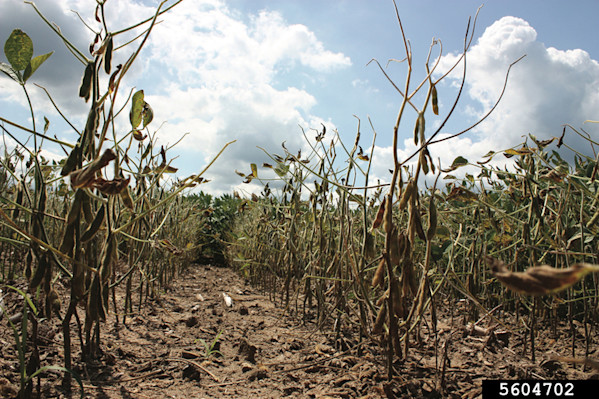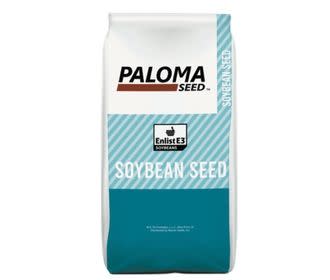How to Identify Sudden Death Syndrome
Infection may occur early in the season, but symptoms will not be visible until around the time of flowering. Plants infected with this disease can easily be pulled from the soil. Soybean roots will appear rotted and blue fungus can be found in masses on the main or tap root. The inside of the roots will be gray to reddish brown instead of a healthy white color. If you were to split the main stem lengthwise, the insides would be a discolored grey to brown. However the pith will still be white, which is important to differentiate this disease from brown stem rot.
Foliar symptoms appear after flowering, around the R3 stage, and are identifiable early on as yellow chlorotic spots between the leaf veins. As the disease progresses, these spots merge together and lesions turn necrotic and brown as the tissue dies. Leaves may be curled and eventually detached from the plant. Defoliated plants will still have petioles attached to the stem, which is commonly associated with sudden death syndrome.
Correct identification of SDS is vital as it can mimic other diseases like Brown Stem Rot (BSR). However, unlike BSR, SDS does not cause pith browning. The presence of blue fungal growth on the roots is a strong indicator of SDS.
SDS symptoms typically manifest after flowering. Initial signs include yellow or white spots between the leaf veins. As the disease advances, these spots enlarge and darken, while the veins retain their green hue. In advanced stages, leaves wither and fall, leaving the petioles (leaf stems) attached to the plant.
(Image Credit: Martin Chilvers, Bugwood.org)


